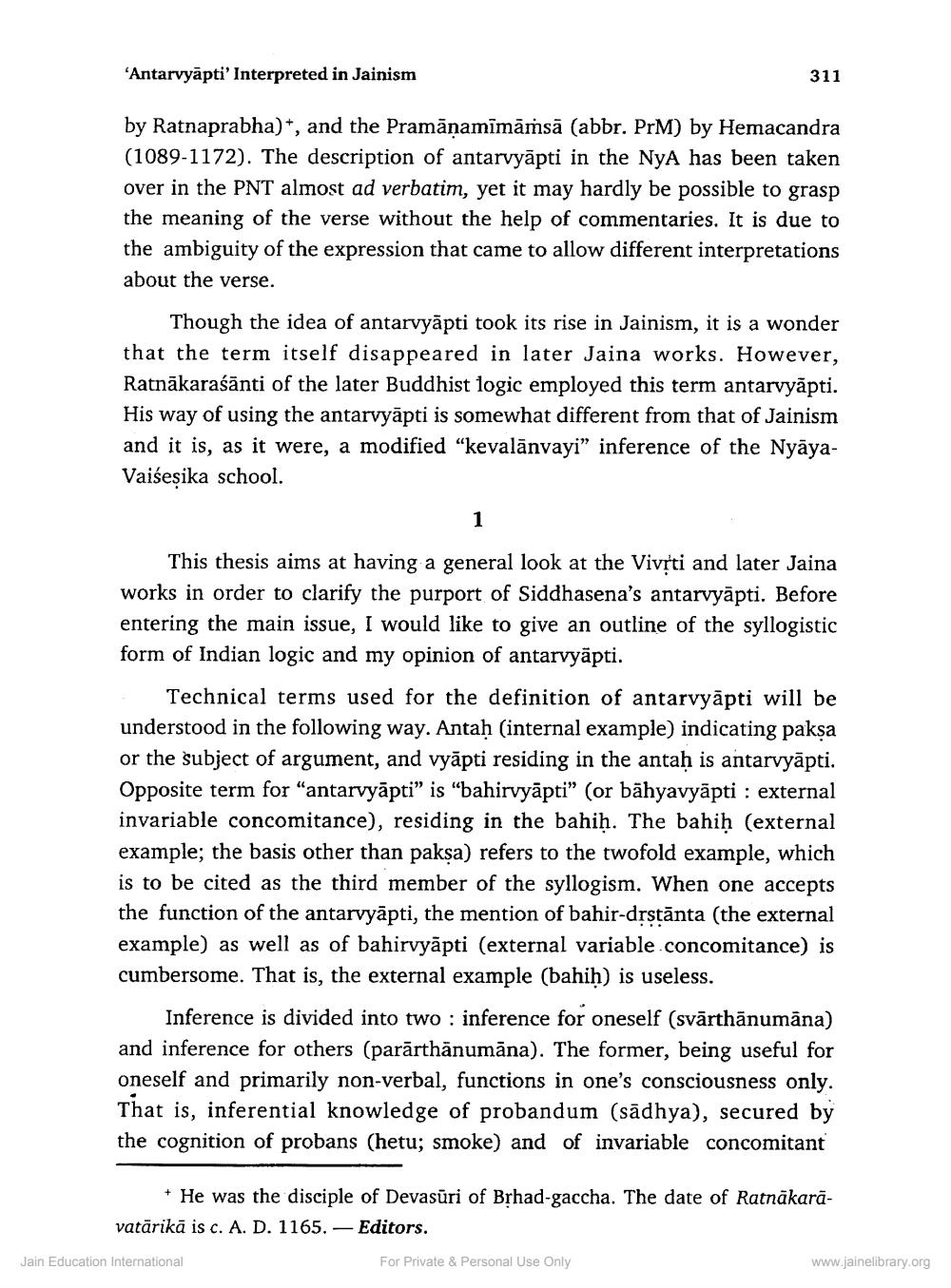________________
'Antarvyāpti' Interpreted in Jainism
311
by Ratnaprabha), and the Pramānamīmāmsā (abbr. PrM) by Hemacandra (1089-1172). The description of antarvyāpti in the NyA has been taken over in the PNT almost ad verbatim, yet it may hardly be possible to grasp the meaning of the verse without the help of commentaries. It is due to the ambiguity of the expression that came to allow different interpretations about the verse.
Though the idea of antarvyāpti took its rise in Jainism, it is a wonder that the term itself disappeared in later Jaina works. However, Ratnākaraśānti of the later Buddhist logic employed this term antarvyāpti. His way of using the antarvyāpti is somewhat different from that of Jainism and it is, as it were, a modified "kevalānvayi” inference of the NyāyaVaiseșika school.
This thesis aims at having a general look at the Vivrti and later Jaina works in order to clarify the purport of Siddhasena's antarvyāpti. Before entering the main issue, I would like to give an outline of the syllogistic form of Indian logic and my opinion of antarvyāpti.
- Technical terms used for the definition of antarvyāpti will be understood in the following way. Antah (internal example) indicating paksa or the subject of argument, and vyāpti residing in the antah is antarvyāpti. Opposite term for “antarvyāpti” is “bahirvyāpti” (or bāhyavyāpti : external invariable concomitance), residing in the bahiḥ. The bahih (external example; the basis other than paksa) refers to the twofold example, which is to be cited as the third member of the syllogism. When one accepts the function of the antarvyāpti, the mention of bahir-drstānta (the external example) as well as of bahirvyāpti (external variable concomitance) is cumbersome. That is, the external example (bahih) is useless.
Inference is divided into two : inference for oneself (svārthānumāna) and inference for others (parārthānumāna). The former, being useful for oneself and primarily non-verbal, functions in one's consciousness only. That is, inferential knowledge of probandum (sādhya), secured by the cognition of probans (hetu; smoke) and of invariable concomitant
+ He was the disciple of Devasūri of Brhad-gaccha. The date of Ratnākarāvatārikā is c. A. D. 1165. - Editors.
Jain Education International
For Private & Personal Use Only
www.jainelibrary.org




